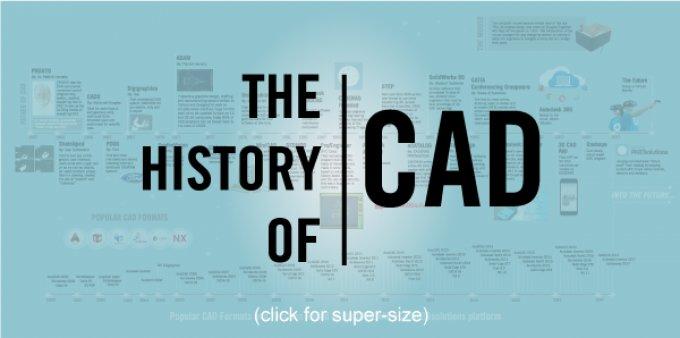While the History of CAD closely parallels the “History of the Computer,” there have been many innovations and iterations along the way. With it’s introduction in 1957, it was still decades ahead of small and affordable computers which could run the software. Pencil and paper would remain the primary way “draftsman” would create designs for another 30 years. But the groundwork was laid for things to come, CAD software would become a fundamental tool for nearly every industry.
The idea of CAD has grown from simple 2D designs into complex, multi-layered 3D structures with kinematic-movement and detailed meta-data. Similarly, the CADENAS Electronic Product Catalog has paralleled innovations in the CAD industry. The eCATALOGsolutions platform is continually evolving to provide native formats as soon as they are available, often times before they are publicly available. Whether you launch your CADENAS Electronic Product Catalog in 2001, 2017 or 2027, all of the CAD models you provide your clients with will remain backward compatible and “future-proof.”
History of CAD Highlights:
PRONTO- 1957
Built by Patrick Hanratty, this was the first commercial numerical-control programming system, sparking everything that is CAD.
Sketchpad – 1960
Built by Ivan Sutherland, this was the first to ever use a total graphic user interface, users wrote with a light pen on an x-y pointer display, let users constrain properties in a drawing, created the use of “objects” and “instances”.
ADAM – 1971
Built by Patrick Hanratty, this interactive graphics design, drafting and manufacturing system was written in Fortran and designed to work on virtually every machine, it was a huge hit that went on to be updated to work on 16 and 32 bit computers, today 80% of CAD programs can be traced back to the roots of ADAM.
IGES – 1980
Lets users transfer their 3D designs between CAD software programs, once STEP was released in 1994 IGES did not get updated anymore, on its way out but still accepted in many places.
CATIA – 1981
By Dassault Systemes – Multi platform CAD software, still in use today.
AutoCAD – 1982
By Autodesk, this was the first 2D design CAD software made for PCs instead of mainframe computers or minicomputers.
Pro/Engineer – 1987
Now PTC Creo, this was the first mainstream CAD program that took the ideas of Sketchpad (Interactive, easy to use, fast) and made it come to life, based on solid models, history based features, and the use of constraints, this was a huge turn in CAD history because it completely knocked out any competition, others were written in Fortran and assembler this was written in UNIX’s X-Windows which made it faster and user friendly.
Autodesk
AutoCAD R13 – 1994
Made the Autodesk program 3D compatible.
STEP – 1994
Took over from IGES as the new format to use when transferring 3D models from one to another, 1994 was the initial release of STEP that made it an international standard for models, still the most used format.
SolidWorks 95 – 1995
By Dassault Systemes – Another software that succeeded in ease of use, allowed more engineers than ever to take advantage of 3D CAD technology.
Solid Edge – 1995
By Siemens Made as a PLM software (Product Lifecycle Management), functions on Windows, provides solid modeling, assembly modeling, and 2D orthographic view, response to success of SolidWorks.
Autodesk Inventor – 1999
Autodesk’s new direction, tried to be more intuitive and simple, also allowed the creation of complex assemblies in record time, still in use, really upped the game in the CAD world.
Autodesk 360 – 2012
Moved CAD to the cloud.
CADENAS GmbH
Schernecker Str. 5
86167 Augsburg
Telefon: +49 (821) 258580-0
Telefax: +49 (821) 258580-999
http://www.cadenas.de
Presse
Telefon: +49 (821) 258580-0
E-Mail: l.nantke@cadenas.de
![]()
